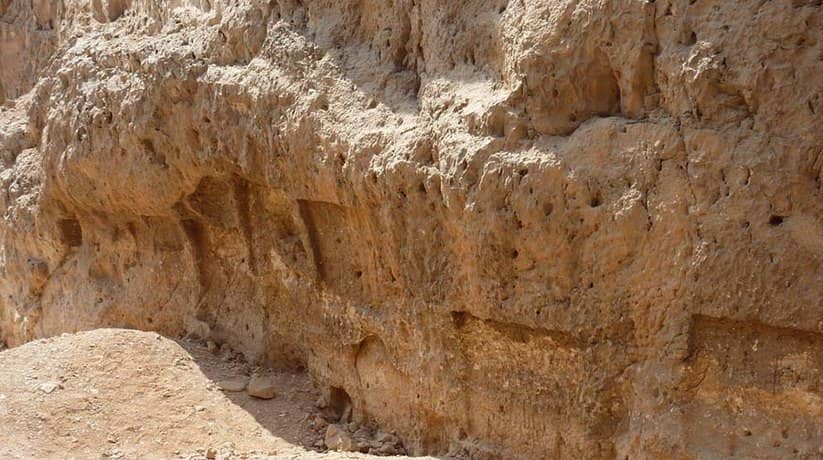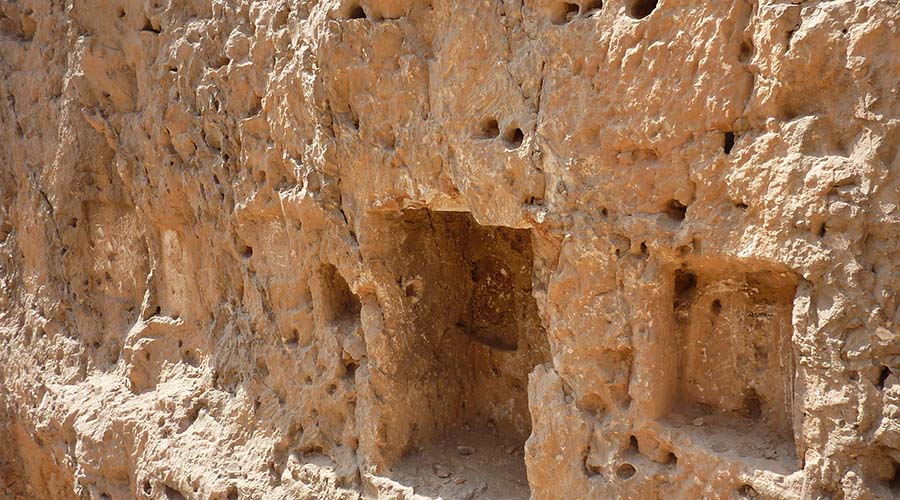Hatnub Quarries Asyut Egypt tours, prices, booking
Hatnub quarries Asyut are stone quarries which located in Asyut, Egypt. In fact, Hatnub quarries are just 65 Kilometer south of El Minya. Moreover, the quarries located to the south east of Tell El Amarna. Furthermore, the area contains the principal quarries for travertine or calcite. Moreover, it known as “Egyptian Alabaster” and used from the Old Kingdom. In fact, the name Hatnub means “Mansion of Gold”. The site had many hieroglyphic inscriptions, graffiti and pottery sherds. In fact, the hieroglyphic inscriptions enabled us to understand the history of the site. There are inscriptions of Dynasty VI kings Teti and Pepi I which carved into the quarried rock.
The site perhaps immortalized during this period in the “Biography of Weni”. In fact, the Biography of Weni is from the official’s tomb chapel at Abydos. In his biographical text, Weni described a mission he undertook for Pepi’s son Merenre. The inscription says “His Majesty sent me to Hatnub to bring a great altar of alabaster”. So, it presumably used in the construction of Merenre’s pyramid. Moreover, Pepi II’s name also appears in texts here. Hatnub quarries were, at least in the early days, for use by the king. Yet, later graffiti shows that wealthy families also exploited the valuable stone. In fact, it was in the First Intermediate Period.
Further details about Hatnub Quarries Asyut Egypt:
Moreover, there are important topics which addressed in texts from Hatnub quarries. They include the struggle of the Herakleopolitan rulers against the Theban rebels. It was at the end of the First Intermediate Period. In fact, the Theban kings gained in power. The inscriptions of the ruler Mentuhotep recorded on the rock walls. Moreover, the inscription of Mentuhotep IV also recorded on the rock walls. In fact, they were from the Middle Kingdom. Mentuhotep IV’s texts show that some of the nomarchs of Middle Egypt were troublesome. The nomarchs of the Heliopolitan nome were self-styled ‘”kings”. In fact, the kings who still held power during the Middle Kingdom.
In fact, it was although now more supervised by the pharaoh’s officials. The ruler of the Hermopolite nome, Neheri, left inscriptions at the site. In fact, the inscriptions dated back to his own “reign”. Moreover, the inscriptions shows that he challenged the Theban pharaoh’s authority. One of the last of the powerful nomarchs was Djutihotep of Dynasty XII. In fact, his tomb located at Deir El Bersha. The tomb contains a depiction of 172 men who drag a colossal alabaster statue. In fact, the statue is over 6.5 meter high and they drag is from Hatnub quarries Asyut. The site much used in the New Kingdom. Moreover, the quarries received attention from Amenhotep I of Dynasty XVIII time.
More details about Hatnub Quarries Asyut Egypt:
There is colossal alabaster Sphinx in the precinct of the Ramesside temple at Memphis. In fact, this sphinx carved from calcite from the Hatnub quarries. Moreover, the sphinx was one of a pair who guarded an earlier monument at Memphis. Furthermore, they placed there by Hatshepsut. In fact, Hatshepsut’s name identified on an alabaster jar fragment. The jar is from the Temple of Ptah at Memphis. In fact, she was the first New Kingdom ruler. Moreover, she built many monuments in Middle Egypt and of course had access to the Hatnub quarries Asyut. In fact, the site had three principal quarrying areas. Moreover, the site’s main quarry (P) is a pit 55 meter by 85 meter in area and 16 meter deep.
Moreover, there were also settlements for the workers. In fact, the settlements characterized by dry stone walls and windbreaks. Moreover, they also characterized by a transportation system of causeways and roads. The site was an important source for the precious stone. In fact, the stone carved so that the light would shine through it. Moreover, it used in the construction of altars, sarcophagi and beautiful shrines. The shrines are such as that of Senusret I which reconstructed in Karnak open-air museum. In fact, there was nothing to equal its aesthetic qualities in Ancient Egypt.















